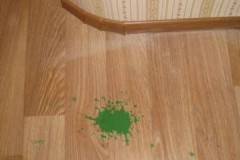How to gently and safely wipe the paint off your hands?
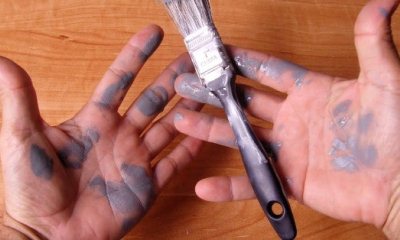 Repairs, hair dyeing, applied arts and crafts and other work often lead to dirty hands.
Repairs, hair dyeing, applied arts and crafts and other work often lead to dirty hands.
Erasing paint can be tricky. Chemical and mechanical methods come to the rescue.
We will figure out how to wipe off the stamp, construction, art, paint for hair from hands.
Content
What can be removed?
There are three main ways to wash off the paint from your hands:
- Abrasive products such as washing powder.
- Natural solvents (e.g. citric acid).
- Chemical solvents (gasoline, acetone, etc.)
Gasoline and kerosene
Gasoline (it is better to use refined gasoline) and kerosene can act as effective solvents. They should be applied carefully, avoiding smearing the substance on the skin of the hands that is not stained with paint.
Application:
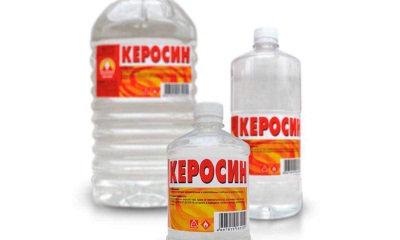 Soak a cloth in kerosene or gasoline.
Soak a cloth in kerosene or gasoline.- Rub the stained areas on your hands for a minute.
- Wash off with water.
- Wash your hands with soap and water.
- Wipe skin dry.
- Lubricate with hand cream.
The advantage of the cleaning method is efficiency.
There are also disadvantages:
- the toxicity of the substance itself and its vapors;
- irritating effect on the skin;
- not recommended for children.
Acetone
This substance belongs to universal cleaners. It is used to eliminate contamination.
Acetone has an unpleasant pungent odor, but well removes polyurethane dyes and silicone sealant residues from hands and other surfaces. The advantages and disadvantages of acetone are the same as those of the previous method.
Oil products
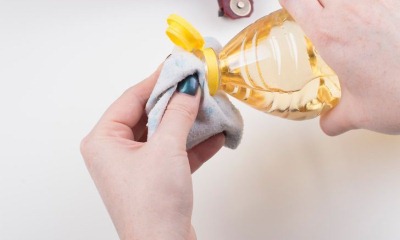 In cases where the skin is stained with acrylic compound, enamel and nitro enamel, oily greasy substances can be used for cleaning.
In cases where the skin is stained with acrylic compound, enamel and nitro enamel, oily greasy substances can be used for cleaning.
For use it is possible to choose:
- vegetable oils;
- melted butter;
- melted margarine;
- animal fat.
The advantages of this method:
- Environmental friendliness.
- Harmlessness.
- Rubbing a greasy product, you can not be afraid that it will get on the unstained skin - it will not bring harm.
- Can be used even by children.
There is only one drawback - poor efficiency... In order for the grease on the skin to remove the paint, it is necessary to rub it in for 5 to 10 minutes.
How to clean with washing powder?
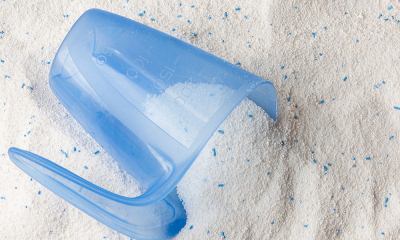 The abrasive property of the powder is used for cleaning hands. The effect is achieved by a purely mechanical action on the stains.
The abrasive property of the powder is used for cleaning hands. The effect is achieved by a purely mechanical action on the stains.
Procedure:
- apply a small amount of powder to the place of hand contamination;
- rub;
- wash off.
The disadvantage of the method is a negative effect on the skin hands. The sharp edges of the grains with active friction not only destroy the paint layer, but also injure the skin.
With intensive cleaning, damage to the skin is possible - the formation of scuffs and wounds, which will have to be additionally processed and treated.
Instead of washing powder, such substances can be used: salt, soda and even sugar.
Toothpaste
The active substances in the toothpaste can also serve as a means of cleaning hands from paint.
Mode of application:
- Wet your hands with water.
- Squeeze a small amount of toothpaste onto your soiled hand.
- Use the fingers of your other hand to rub the paste into the stain.
Lemon acid
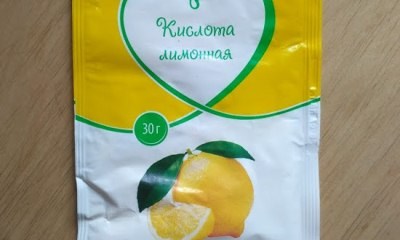 Using natural acids is one way to remove paint from leather. Despite its natural origin and the use of citric acid even in cooking, it is quite caustic when applied directly to the skin.
Using natural acids is one way to remove paint from leather. Despite its natural origin and the use of citric acid even in cooking, it is quite caustic when applied directly to the skin.
It is convenient to use a napkin or sponge for processing (if the stain is very small)... After removing the coloring agent with acid, hands must be washed. You can also use acetic acid.
Alcohol
Alcohol-containing preparations can serve as solvents if no other means are at hand.
Suitable for cleansing:
- vodka;
- medical alcohol;
- alcohol-based antiseptics, etc.
Application:
- Apply alcohol-based substance to the paint with a napkin.
- Carry out the processing for about 10 minutes.
- If the alcohol has evaporated and the napkin is dry, it is moistened again.
- Wipe your hands with a rag.
- Wash your hands with soap and water.
- Lubricate with hand cream.
Alcohol dries out the skin of the hands.
Solvents
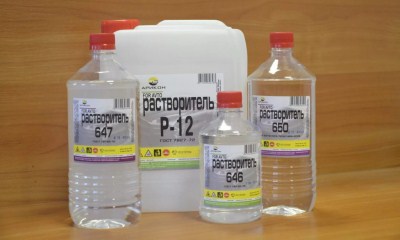 Special preparations that are designed specifically for a specific type of paint are one of the best ways to clean your hands quickly. For this such a solvent is selected, on the basis of which the coloring composition itself was made.
Special preparations that are designed specifically for a specific type of paint are one of the best ways to clean your hands quickly. For this such a solvent is selected, on the basis of which the coloring composition itself was made.
Upon contact with the paint, the applied chemical is absorbed into it, destroying it and transforming it into a liquid, easily removable state.
To apply the solvent to stained hands, you can use, depending on the size of the stained area, a rag, sponge or cotton swab.
Procedure:
- Moisten a swab or rag liberally with solvent.
- Carefully and gently wipe the stains on your hands. Do not use excessive force in order not to further injure the skin.
- Rub no more than 60 seconds. During this time, the paint, dissolving, will begin to transfer to the rag.
- With significant staining of the applied rags, a new rag is taken for processing. This is necessary to avoid getting your hands dirty with paint again.
- After hands are cleaned, they are washed using toilet soap to remove the chemical from the skin.
- Apply a greasy cream to your hands.
Features of the removal of various types of coloring agents
The best result of cleansing your hands can be obtained if you know exactly what kind of composition left the stains. Even inks such as stamp ink and those used in printers require a separate approach to disposal.
Refill for printer and printing
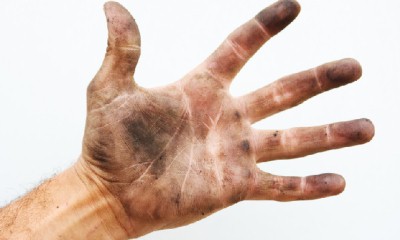 If the printer toner is water-based, rinse fresh stains from the skin with plain running water... Be sure to wash your hands with cold water.
If the printer toner is water-based, rinse fresh stains from the skin with plain running water... Be sure to wash your hands with cold water.
Otherwise, instead of washing, you can get the opposite result - fixing the color.
You can additionally use laundry soap, washing powder, a brush to clean your hands.
Toner manufacturers allow the dye to cure when exposed to high temperatures, so you should not wash your hands in hot water.
The principle of operation of dyes of inkjet printers, which are made on an oil basis, is the impregnation of layers of paper. The same happens with the skin of the hands. When washing it is possible to wash off only the top layer of the dye... The pigment will completely disappear only after a few days.
In addition to the listed methods, it is recommended to use means that are designed to remove printing and other types of ink.
- special cleaner Strong & Safe Flexographic ink Hand Cleaner;
- soap with fine pumice stone Fast Orange Pumice Bar Hand Soap;
- deep cleansing lotions, etc.
Construction and art
 Water-based paint stains can be removed from your hands by hand washing with soap. If the pigment is difficult to remove, it is recommended to rub the skin with the hard side of a washcloth or a brush.
Water-based paint stains can be removed from your hands by hand washing with soap. If the pigment is difficult to remove, it is recommended to rub the skin with the hard side of a washcloth or a brush.
For acrylic, nitro enamel and enamel, the role of the solvent is played by:
- acetone,
- petrol,
- White Spirit.
Oil products can also be used. Water emulsion, if it is dry, can be washed off by washing your hands with washing powder using a brush. Harsh washes and paint thinners should not be used to clean hands as they can cause chemical burns.
For hair
You can remove hair dye from your hands with a simple wash with water, if the problem was noticed immediately.
5 expert recommendations
In the process of cleaning hands from paint We recommend using the following tips:
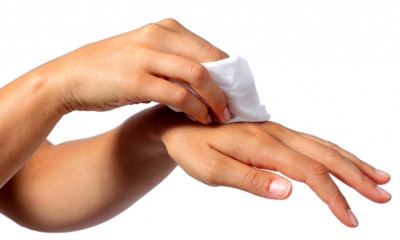 Solvents and other chemicals should be applied outdoors or in well ventilated areas.
Solvents and other chemicals should be applied outdoors or in well ventilated areas.- If you are allergic to skin paint remover, do not use it.
- After removing the paint, it is necessary to thoroughly wash off the remnants of the product from your hands.
- When using acetone, kerosene, gasoline or thinner, safety precautions must be followed, as these are flammable and flammable substances.
- If, after applying washing powder or soda, the effect was not achieved, the use of solvents is immediately undesirable. This can lead to painful chemical burns on skin that has already been exposed to intense exposure.
In most cases, natural and harmless hand cleaners are less effective than chemicals on “cured” stains.
Useful video
How to wash paint from hands without acetone and solvent, video advice:
Conclusion
It will be possible to quickly wash off the paint from your hands only if it has not had time to harden. Wherein most washes, especially chemical ones, should be handled with extreme caution, trying to act only on the spot itself, and not to touch clean skin.
The procedure should be completed by washing hands with soap and treatment with hand cream or healing ointment if irritation occurs.


